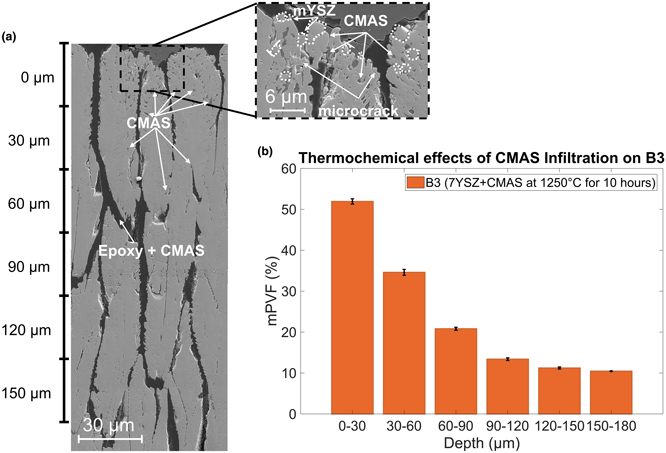Article contents
High-energy X-ray phase analysis of CMAS-infiltrated 7YSZ thermal barrier coatings: Effect of time and temperature
Published online by Cambridge University Press: 28 August 2020
Abstract

Calcium–magnesium–alumino-silicate (CMAS) particulates enter the aero-engine in a sandy environment, melt and infiltrate into 7 wt% yttria-stabilized zirconia (7YSZ) thermal barrier coatings (TBCs), reducing their lifetime. This leads to chemical degradation in 7YSZ accompanied by tetragonal to monoclinic phase transformation upon cooling. In this work, electron-beam physical vapor deposition coatings were infiltrated with a synthetic CMAS. Synchrotron X-ray diffraction measurements show that CMAS infiltration at 1250 °C has about 43% higher monoclinic phase volume fraction (PVF) at the coating surface compared to 1225 °C and remains consistently higher throughout the coating depth. Additionally, the increase in annealing time from 1 to 10 h results in a 31% higher monoclinic phase at the surface. Scanning electron microscopy revealed the presence of globular monoclinic phases corresponding spatially with the above findings. These results resolve the impact of time and temperature on CMAS infiltration kinetics which is important for mitigation.
- Type
- Article
- Information
- Journal of Materials Research , Volume 35 , Issue 17: Focus Issue: Sand-phobic Thermal/Environmental Barrier Coatings for Gas Turbine Engines , 14 September 2020 , pp. 2300 - 2310
- Copyright
- Copyright © The Author(s), 2020, published on behalf of Materials Research Society by Cambridge University Press
References
- 8
- Cited by



